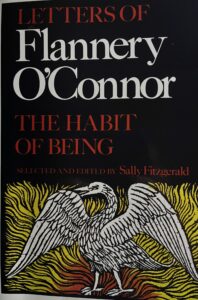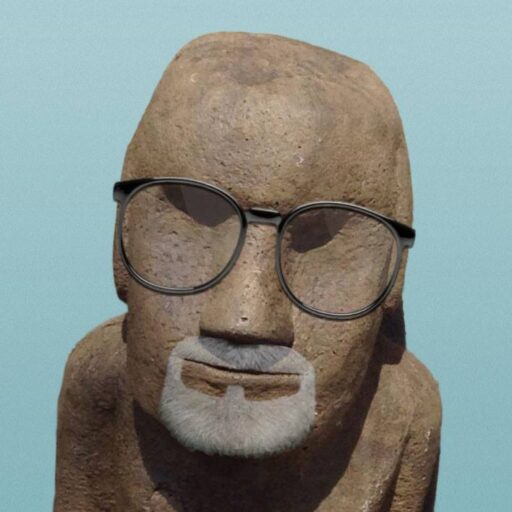The Habit of Being – The Letters of Flannery O’Connor, Selected and Edited by Sally Fitzgerald.

Flannery O’Connor was a fascinating, complex woman. She wrote some of the best fiction ever produced by an American, and couldn’t spell worth a lick. She loved to paint, but thought she painted badly. She didn’t understand music or even listen to it seriously until the last years of her life — “… [I[ don’t know Mozart from Spike Jones.” She couldn’t remember the details of the massive number of books she read, but could incisively describe the thought and essence of authors and theologians most people wouldn’t even attempt to read. She raised peahens, peacocks, and other fowl. She suffered debilitating illnesses yet traveled extensively to lecture, do readings, and later in life, to receive honorary degrees. She had a great sense of humor and could shift between Southern vernacular and erudite exposition at the drop of a hat. She was modest about her abilities and understanding when modesty was called for, and assertive in expressing her ideas and opinions when she knew what she was talking about. She was an orthodox Catholic to the letter, but despised holier-than-thou attitudes: “… the Church is entirely set up for the sinner; which creates much misunderstanding among the smug.” She filled her stories with Protestant, not Catholic, characters. She lived most of her adult life on the family dairy farm with her mother.
She said this about her visit to Lourdes, where she went to for healing at the insistence of a relative: “I am one of those people who cold die for his religion easier than take a bath for it.” Among her friends were James Dicky, Robert Lowell, John Hawkes, and many other distinguished men and women of letters. Despite continual rewriting and refining, her stories were frequently misunderstood, and yet in her letters she could whip off a brilliant epigram seemingly off the top of her head: “Dogma is the guardian of mystery;” “A God you understood would be less than yourself.”
She considered herself very poor at prayer and meditation, could barely pass the driver’s test, only once traveled outside the U.S., and had only one space she felt was completely her own: her desk – and yet she had an understanding of the world and and the greater reality of the Divine that surpassed that of highly educated and well-travelled intellectuals. She was a generous, caring, and constant friend. She wouldn’t have done well on social media: “I hate to deliver opinions. On most things I don’t deserve an opinion and on a lot of things I simply don’t have an opinion.”
 I love her attitude about friendship: “I love a lot of people, understand none of them.”
I love her attitude about friendship: “I love a lot of people, understand none of them.”
She was more interested in helping her friends work out problems than discussing her own, and her way of helping often involved a brutal bluntness – yet she could be as tactful as a politician when the situation called for it.
You could say she was a committed writer: “I would rather finish this novel [The Violent Bear It Away] right than be able to walk at all.”
She was a painfully slow writer. It took her seven years to finish her second and final novel, The Violent Bear It Away. About her habit of rewriting she said, “When the grim reaper comes to get me, he’ll have to give me a few extra hours to revise my last words.”
A social butterfly she was not: “Whoever invented the cocktail party should have been drawn and quartered.”
When discussing the Catholic Church she was at the same time eminently practical and yet able to see the big picture always: “The Churches stand on birth control is the most absolutely spiritual of all her stands and with all of us being materialists at heart, there is little wonder that this causes unease. I wish various fathers would quite trying to defend it by saying that the world can support 40 billion. I will rejoice the day when they say, This is right, whether we all rot on top of each other or not, dear children, as we certainly may. Either practice restraint or be prepared for crowding.”
She had a temper. She would sometimes lay into people quite severely in a letter, and then apologize for it in a subsequent one. But the motives behind her outbursts always seemed to be constructive.
Sprinkled generously throughout this massive collection of letters she gives us bits and pieces about her writing methods and purposes. She knew her stories were hard to understand, and she, I suppose like many creatives, preferred to let her work speak for itself rather than offer explanations of it. In my case, I usually found her explanations only marginally more clear than the stories themselves, but they are marvelous stories nonetheless.
If you find any of these rambling reflections on Flannery O’Connor even remotely interesting, you will enjoy this nearly 600-page collection, as I am barely doing justice to the insights, entertainment, education, and inspiration to be found in her letters.
Grade: A+
